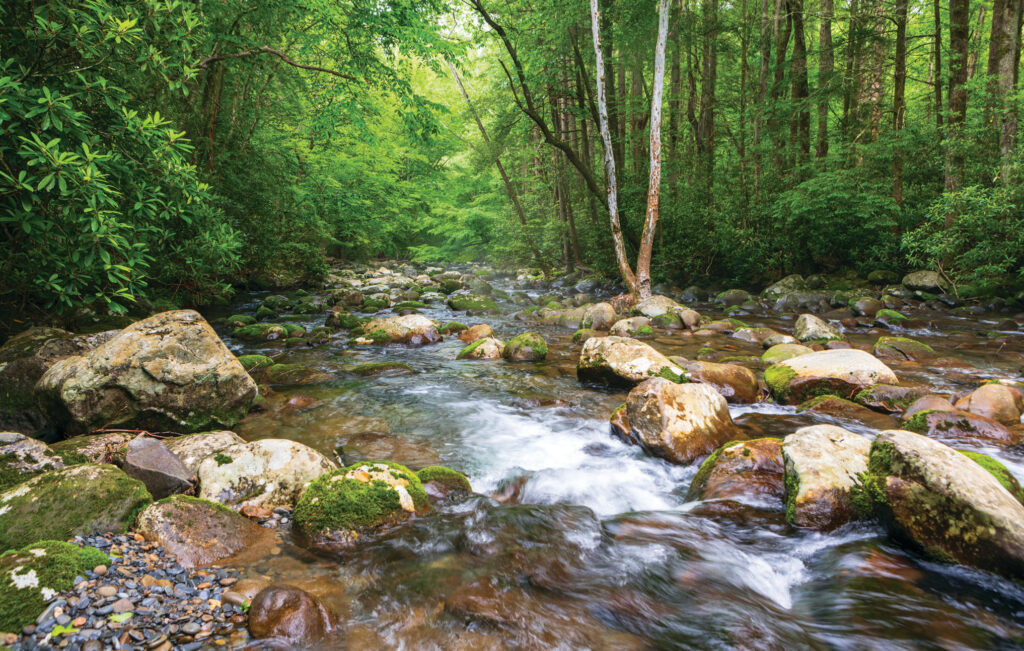“Porters Creek” by Robin Conover
Canon EOS 5D Mark IV EF 24–77mm at 24mm, 2.8 L lens
ISO 400, fl8 at 1/10 second
Water attracts me. Whether it’s a gentle rainstorm, a lake with an afternoon reflection or a constantly tumbling mountain river, I find myself easily intrigued and calmed in the presence of water.
Perhaps it’s because I’m an Aquarius and a nature photographer that I have a natural affinity to sit at the water’s edge and contemplate. I don’t think, however, it’s just me. Most of us are attracted to water at heart.
It is, after all, the essence of life. It is nature’s lifeblood. Just think about it as the “bloodstream” flowing through the environment. Without it, we do not exist. Perhaps that’s why it is so intriguing.
After a rainfall, in places like the Great Smoky Mountains National Park, excess water naturally flows downhill into watersheds, is absorbed by the forest floor, and drains into underground springs and waterways. Smaller streams and creeks like Porters Creek in the Greenbrier area then converge and form larger rivers and so on and so on until the water reaches a large tributary or even the ocean. It’s a life-sustaining cycle.
A favorite spot of mine to observe this cycle of life is at the end of a one-lane gravel road in the Smoky Mountains. The Porters Creek Trail is a perfect place to explore mountain streams. This area provides easy access to the creek and is beautiful to visit year-round.
On a recent trip early this summer, I stopped by one of my favorite spots along the creekside. In the 25 years I’ve photographed this scene, I marvel at how little things have changed.
Most of the trees have grown larger while others have been felled by floodwaters and erosion. The wildflowers still bloom each spring, carpeting the lush forest floor. The rushing, cold water is a constant, and the large boulders rarely shift — though some have collected more moss and lichens.
With each visit, I spend as much time as I can before loading up my camera and heading home. It’s like catching up with an old friend and seeing how they have changed with the passing of time.
The exception is that not a single word needs to be uttered. The sound of the river is all that is needed to enjoy a memorable conversation.



